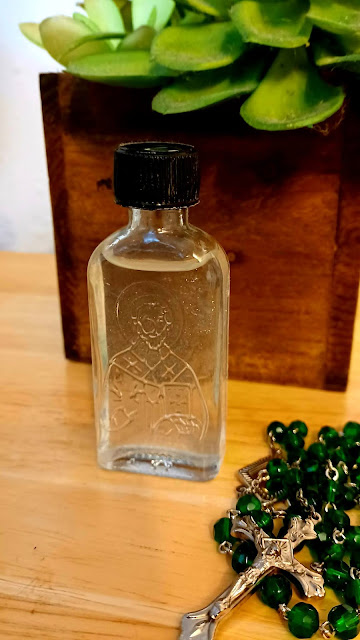Help of the Poor - the real Santa Claus
Feast: December 6th
It’s Christmas Season again, which means “Santa Claus” is a familiar sight in homes, shopping malls, and sidewalk corners. Sadly, there are a lot of people out there who are unaware that the longstanding tradition of this beloved character originated from an actual historic person - a Catholic priest - who died, circa 343 AD in Myra, Lycia (now in present-day Turkey). So this month’s saint bio relates the story of the real St. Nicholas, whose life is far more richer and inspiring than the cuddly caricature modern society transformed him into.
Admittedly, early details are lacking in St. Nicholas' story but what is known of him is that he was born in the city of Patara, in Lycia, to an affluent and highly devout Christian couple; the result of their prayer to conceive a child. In his youth he was said to be exemplary in conduct and proficient in the Church's teachings… and, after returning from a pilgrimage to sacred sites in Egypt and the Holy Land, he joined the priesthood and rose swiftly to the office of Bishop of Myra.
During his episcopal reign, Nicholas was noted for his deep commitment to Christ and the Church, and was a staunch defender against heresies such as Arianism. Having been captured by the officials of the notoriously anti-Christian Roman Emperor, Diocletian, he was imprisoned and tortured for the Faith but never broke under the cruel treatment he received.
A forensic reconstruction using the skull
of St. Nicholas resulted in the image above.
Providentially, the good Bishop was eventually released from captivity after the sympathetic Constantine the Great became Emperor in 306, and finally ended the persecution of Christians. Nicholas later participated in the historic Council of Nicaea, that defined the teachings of the Faith, which was initiated by the same emperor in 325.
In Myra, St. Nicholas was also revered for his solicitous care of his flock and was reported to have worked many miracles, including raising the dead back to life through the power of his prayer. He often went about at night discretely tossing coin-filled purses into the windows of the poor and the sick, which, no doubt, contributed to the Santa Claus legend.
After the Saint’s death from natural causes, his remains were initially interred in a church in Myra, which became a local place of pilgrimage. Things changed, however, after his bones were discovered mysteriously exuding a clear, odorless “myrrh” or "manna", which effected countless cures; causing the fame of St. Nicholas to spread beyond Lycia and into the Mediterranean regions.
The tomb of St. Nicholas in Bari, Italy.
In 1087, a group of Italian merchants sacriligiously broke into the Saint’s tomb and made off with St. Nicholas' remains, transporting them to Bari, Italy; this move further spread his cultus into Europe, and Bari quickly became a pilgrimage hotspot, especially since the miraculous manna continued to seep from the Saint's bones.
Today, St. Nicholas’ relics remain enshrined in a basilica dedicated to his honor in Bari. There, the manna still appears and modern investigations into the phenomena determined it to not be caused by natural factors (e.g. moisture condensation in the tomb). The blessed liquid is collected regularly by the custodians of the shrine for distribution among the Faithful. In this manner, the Saint continues his legacy of helping the sick through the many healings resulting from the devout use of the holy balm.
A bottle of St. Nicholas' blessed myrrh/manna.
So, as one can easily realize - there's much, much more to good ol' St. Nick compared to his fictional alter ego!
St. Nicholas of Myra, pray for us!




No comments:
Post a Comment
[Your comment/feedback is welcomed. However, business advertisements of any sort are not allowed and will be deleted. Thank you.]